The History of Tribeca, One Building at a Time
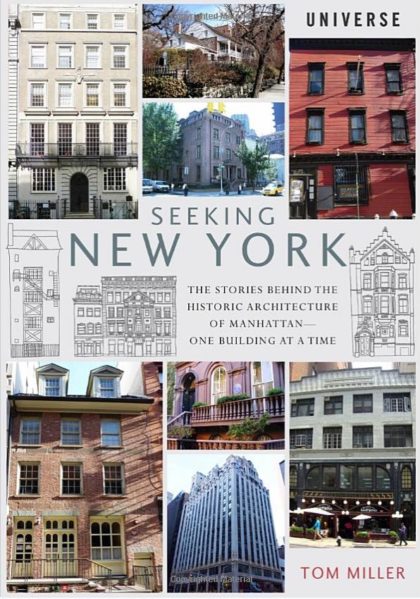 The History of Tribeca Buildings database—compiled from Tom Miller’s posts at Daytonian in Manhattan—has six more entries on the properties below. (Click the address to read the full text.) If you enjoy these, and you will, then you should definitely check out his website, which also has write-ups about buildings all over the island. And don’t miss his book, Seeking New York: The Stories Behind the Historic Architecture of Manhattan—One Building at a Time.
The History of Tribeca Buildings database—compiled from Tom Miller’s posts at Daytonian in Manhattan—has six more entries on the properties below. (Click the address to read the full text.) If you enjoy these, and you will, then you should definitely check out his website, which also has write-ups about buildings all over the island. And don’t miss his book, Seeking New York: The Stories Behind the Historic Architecture of Manhattan—One Building at a Time.
··················
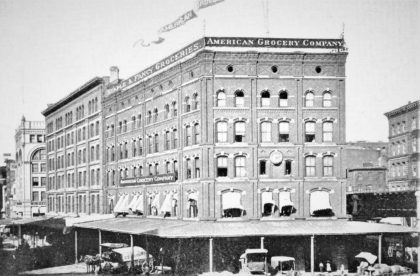 16 HUDSON
16 HUDSON
Grocery company Thurber, Whyland & Co. employed a full-time chemist who produced the items for its drug department. Among them was its Wine of Coca. An advertisement in 1890 promised, “A wineglass of this tonic, taken when one is exhausted and worn out, acts as a most excellent restorative; it gives a feeling of rest and relief, and there is no reaction and no subsequent depression. A general feeling of pleasantness is the result.” That the tonic resulted in a “feeling of pleasantness” and “rest and relief” is understandable. On November 2 that year, Dr. William A. Hammond addressed the New York Neurological Society, warning the members of “the impurities existing in most of the preparations of wine of cocoa.” But he praised Thurber, Whyland & Co., “prominent grocers and druggists,” for having an “exceedingly competent chemist.” The doctor was pleased that Thurber, Whyland & Co.’s wine of coca contained “a fixed proportion of cocaine.”
··················
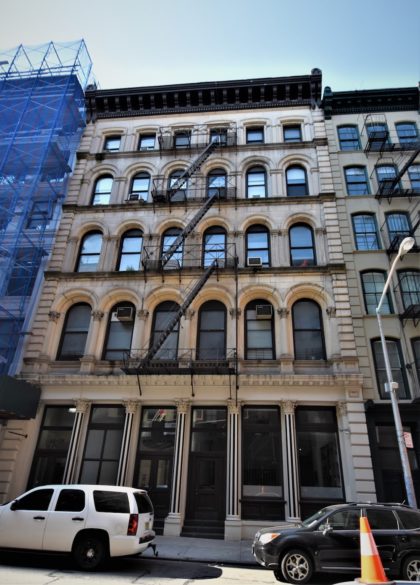 39-41 WALKER
39-41 WALKER
In 1909, when shirtwaist manufacturer Abraham Sitomer’s 200 female workers walked off the job, signed the Waistmakers’ Union agreement, and everything seemed to be settled. But the union ordered the strike resumed upon discovering that Sitomer was selling goods “to employers against whom the strike was still in progress.” In retaliation, Sitomer obtained a restraining order, prohibiting the union from interfering with his operation and “from intimidating any one who desires to work for him.” His affidavit charged that despite the fact that the workers were all female, the union had “threatened the strike breakers with injury and death” and had committed “many actual assaults.” Sitomer was also highly displeased with moneyed socialites, in particular Anne Morgan and Alva Belmont, for providing financial support to the strikers. Both women were fervent early feminists. Sitomer was decidedly not: The New York Times, on January 11, 1910, said his affidavits claimed that the strikers “have ‘no respect for the law and no fear of the police, because of their female sex,’ and because ‘they have won the sympathy of wealthy women who pay their fines and obtain their release when they are arrested for breaches of the peace.’” Later that year, in June, Sitomer sued a number of women whom The Times called “prominent figures in the ‘votes for women’ movement” to recover $50,000 damages he suffered because of the strike. Among them was Alva Belmont. The action, naturally, drew wide attention in the press.
··················
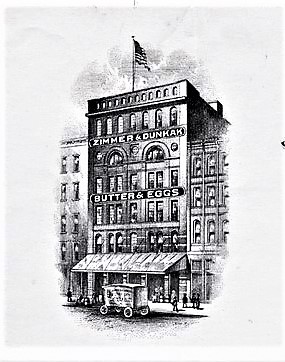 173-175 DUANE
173-175 DUANE
By 1988, the Dannheiser Foundation was in the building, established by Werner and Elaine Dannheisser to exhibit their collection of works by living artists. Their 35-year collection of more than 1,000 artworks were shown free of charge to anyone calling for an appointment. The loft space could accommodate 100 persons at a time, making it viable to dance and other performances as well.
··················
 397 WASHINGTON
397 WASHINGTON
It was about 1914 that Sherwin-Williams left 397 Washington, and the building became home to grocery importers La Manna, Azema & Farnam. The company imported Italian and Spanish products like olive oil, sardines and mushrooms in bulk, then canned and bottled them in the Washington Street building. It labeled different items with their own brand names—like Francois canned mushrooms and Mary Elizabeth sardines. Decades before sexual discrimination laws the firm explicitly hired only females in its bottling department. An advertisement in the New-York Tribune on October 6, 1918, for instance, read “Girls, bottling establishment; good pay steady employment.” A reflection of the much different times, the company’s specificity in hiring, deemed unacceptable today, extended to religion. A June 8, 1919 ad sought an “Office Boy, Christian.”
··················
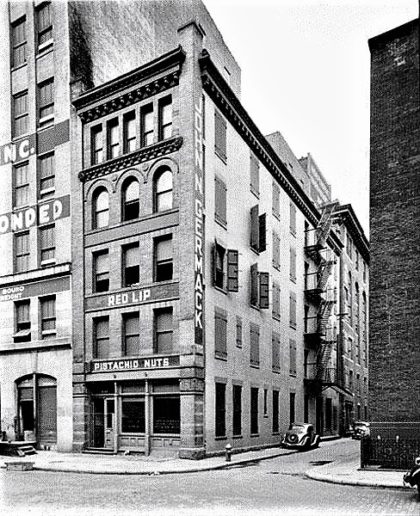 10 HUBERT
10 HUBERT
The 25-foot-wide, two-and-a-half-story brick house that sat at the northwest corner of Hubert and Collister Street in the early decades of the 19th century was owned by Trinity Church. In the 1840s, it was home to the Rev. Jonathan M. Wainwright. Directly behind was a similar house, also owned by the church. On July 22, 1891, Joseph H. Bearns purchased the old houses, paying Michael and Frances Murtha $25,500, a little over $700,000 today. The principal in the liquor importing J. H. Bearns & Co., he commissioned architect Julius Kastner to design a five-story store and loft building on the site. J. H. Bearns & Co. was highly successful, importing expensive brandies and wines from London and Europe. Bearns died in 1914, leaving an estate of $850,000, a staggering $21.5 million today. The terms of his will no doubt raised eyebrows citywide. The estate was distributed among three of his four children—Lillie May, James, and Joseph. The New York Times noted the will “cut off Melville Bearns without a heritage.”
··················
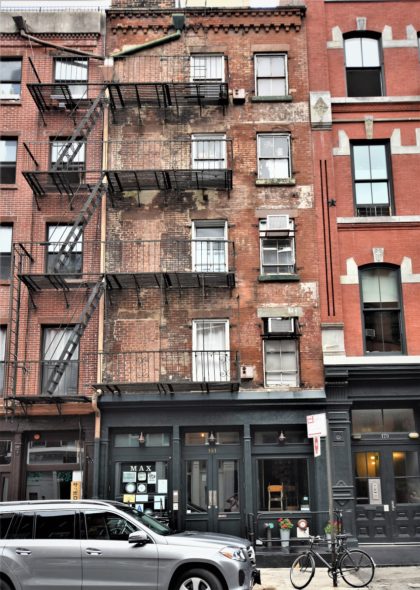 181 DUANE
181 DUANE
Coffee roaster Benedict & Thomas was the victim of a surprising gang in the summer of 1895. Twelve-year old Peter Koohl organized a crime ring that included 11-year old Thomas Ryan, 12-year old Jacob Bardelo, and 9-year old Fred Billy. They started out with simple vandalism, smashing store windows. But on August 27 the Evening World reported, “The boys were lively Sunday night, and robbed Theodore Benedict’s tea and coffee store at 181 Duane street; a cigar store at Duane street, near Broadway, and a harness store at 71 Warren street.” The hooligans may have gotten away with the crime spree had Koohl not gotten too bold. He stole a peddler’s horse and wagon and headed to Harlem where he attempted to sell it. “Failing in this,” said The Evening World, “he abandoned the rig.” The boys were arrested and in the Tombs Court on August 27 where they “acknowledged their guilt and were remanded in care of the Gerry Society.” (The “Gerry Society” was the commonly-used term for the Society for the Prevention of Cruelty to Children.)
··················

















These stories are fascinating! So much history in every building. And of course what we hear, what is preserved, what is remembered, is just a tiny fraction of that building’s history.
Keep them coming, please!